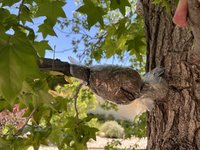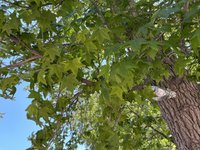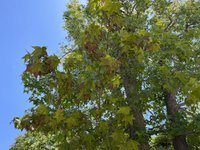Warnold
Seedling
I started an air layer 4 1/2 weeks ago of a branch on my large Liquidamber (Sweet Gum) tree. Today I'm noticing the leaves at the end of the branch are turning reddish brown. I added some water to the sphagnum moss but the package looks fine. Should I consider cutting off some of the outer branch or just let it go? I was expecting another 4 to 6 weeks before seeing new roots. Thanks!
How it looked before adding some water.

Branch as it comes off the tree.

Leaves at end of branch.

How it looked before adding some water.

Branch as it comes off the tree.

Leaves at end of branch.
